Squeeze Play
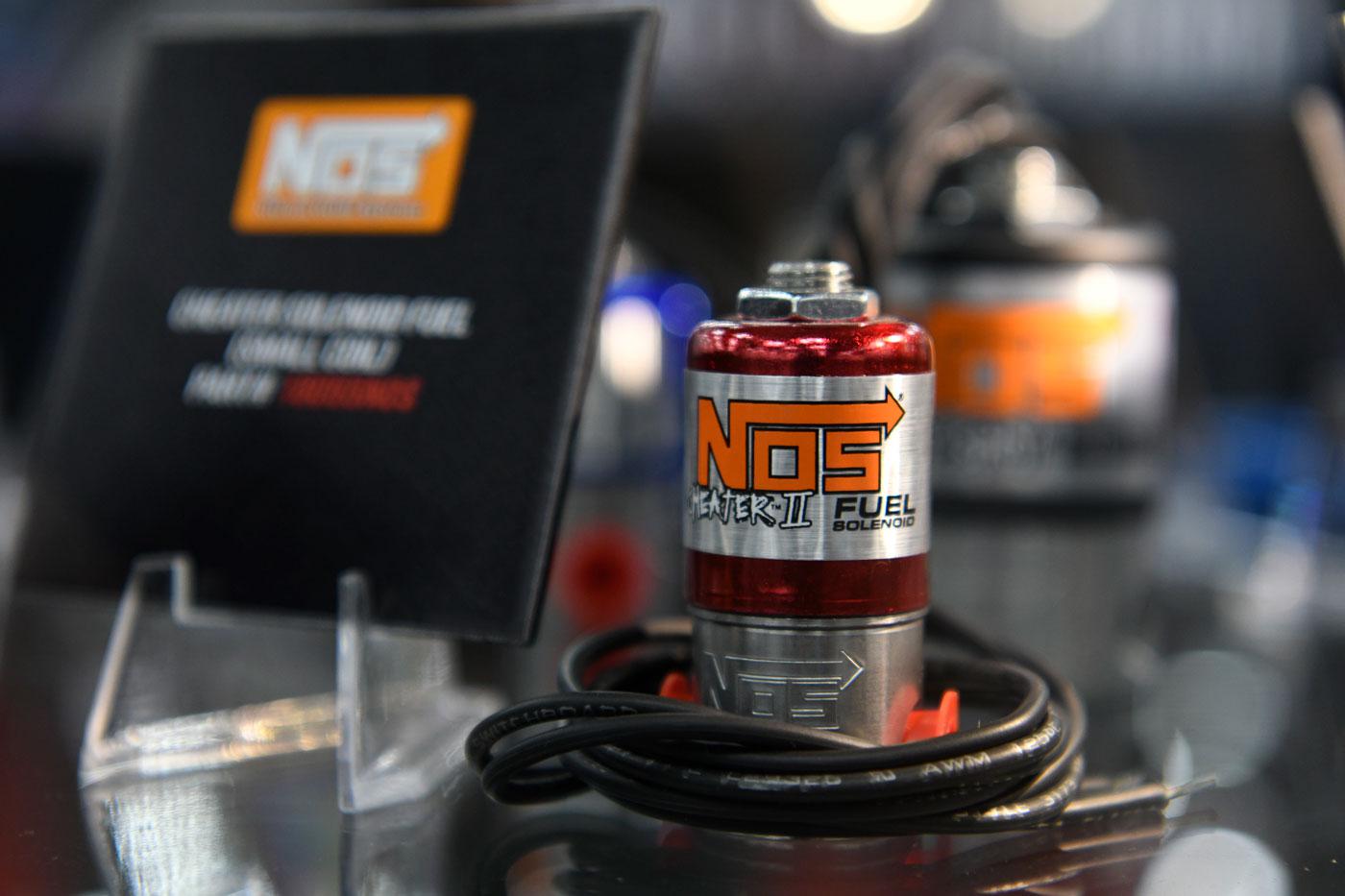
Nitrous oxide is a simple, proven way to economically add significant power, but it must be set up and managed properly to safely achieve its full potential.
“There’s nothing you can do to a motor that I can’t do a whole lot cheaper, a whole lot faster, and a whole lot easier with nitrous,” declared Ernie Wrenn of Compucar Nitrous Systems, North Augusta, South Carolina.
In that spirit, nitrous systems surely had to have been dreamed up by a sportsman drag racer. The easy, quick, simple, and cheap horsepower of this potent elixir is tailor-made for the average weekend competitor looking for fun and glory without breaking the bank.
But, like most things that are easy, there are still plenty of ways to blow it. And with nitrous, the results of doing so can be catastrophic. To learn more about these potential traps, we called on the experts, including one of today’s top nitrous-engine builders and several industry pioneers with decades of experience going back to the formative years of nitrous system development.
Here’s what they told us are 12 key steps to success when adding a nitrous system to any sportsman drag car, whether it’s a K-motor Civic or a big block Chevelle.
1. Get the Right Mindset
It’s all about respect, not fear, according to the specialists. “You shouldn’t be afraid of nitrous,” said Pat Musi of Musi Racing Engines, Mooresville, North Carolina. “Yeah, when you’re putting six stages of nitrous on an engine, it’s a whole different animal. But a sportsman guy can be running nitrous all day long and be fine. It’s not that hard.”
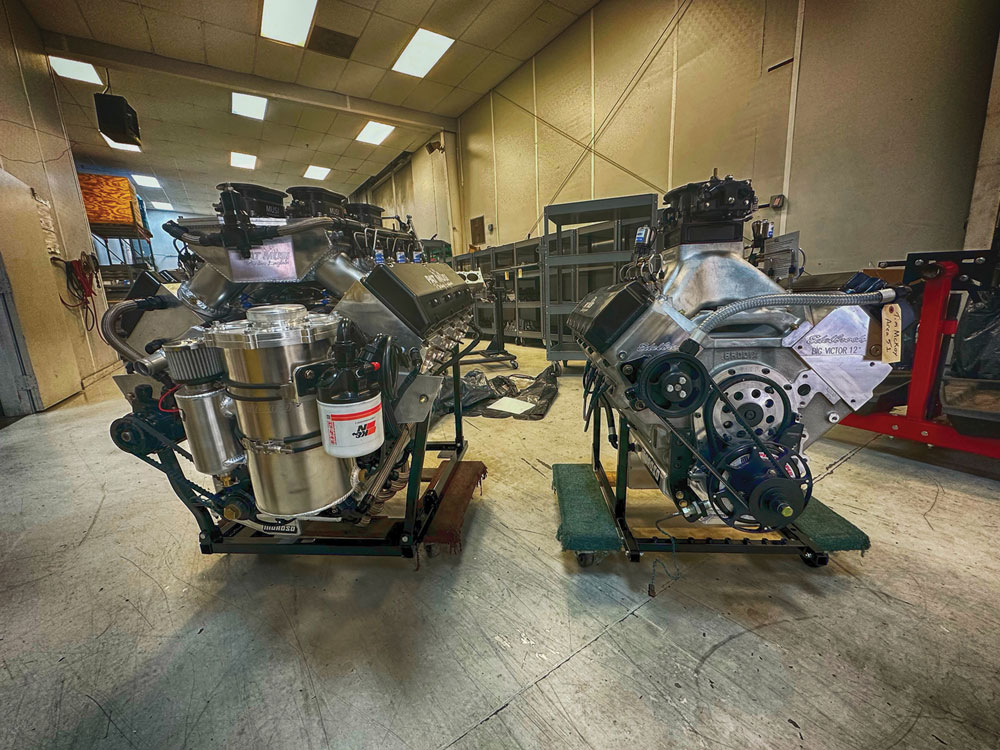
2. Check Overall Engine Condition
Adding a hit of nitrous to an engine that’s on the ragged edge of grenading generally isn’t a good idea, unless it’s in pursuit of the final hurrah before sending the engine off to the dumpster. Nitrous has a way of exposing the weak spots in any engine and hastening their demise.
3. Strengthen Where Needed
No matter what amount of nitrous is added to an engine, cylinder pressures will increase significantly; that’s how more power is made. To cope with those additional pressures, a forged crankshaft, pistons, and connecting rods should be considered essential for anything beyond a mild shot of nitrous.
4. Set Safe Limits
One of the biggest keys to successfully adding nitrous to an existing engine is keeping the power increase to reasonable levels. For stock engines, that limit is relatively low. “You can easily get away with a 50-hp shot on four-cylinder applications, a 75-hp shot on six-cylinder applications, and a 100-hp shot on eight-cylinder applications without any concerns,” said Dustin Wilson at Holley Performance Products, Bowling Green, Kentucky. “When you get above that, you’ll have to start looking into the rotating assembly and other things as far as how the engine is built.”
For V8s that have already been fortified somewhat for racing, that safe rule-of-thumb power figure is significantly higher. “If you’re going to bracket race, a good number for those engines is about 250 to 300 hp,” said Musi. “It’s really hard to hurt an engine with that amount of nitrous.”
5. Plate or Direct Port?
Plate systems are simple and relatively easy to set up, and they don’t require the user to remove the intake manifold. In contrast, direct-port systems—also known as “fogger” systems—are more work to install on carbureted engines. “To add a direct-port system to a carbureted motor, you have to take the intake off, it has to be drilled and tapped, then you have to run all the plumbing to it,” explained Wrenn.
Despite the additional work required to install direct-port systems, they can offer significant advantages. “You can use a plate system up to about a couple-hundred horsepower,” said Mike Thermos of Nitrous Supply, Huntington Beach, California. “But if you’re going to really get serious, you need to go to a fogger-type kit where you have individual plumbing for each cylinder, because you can fatten or lean each one as needed. If one’s showing you that it’s a little bit lean, you can fatten it up. With a plate, you have to fatten up all of the cylinders.”
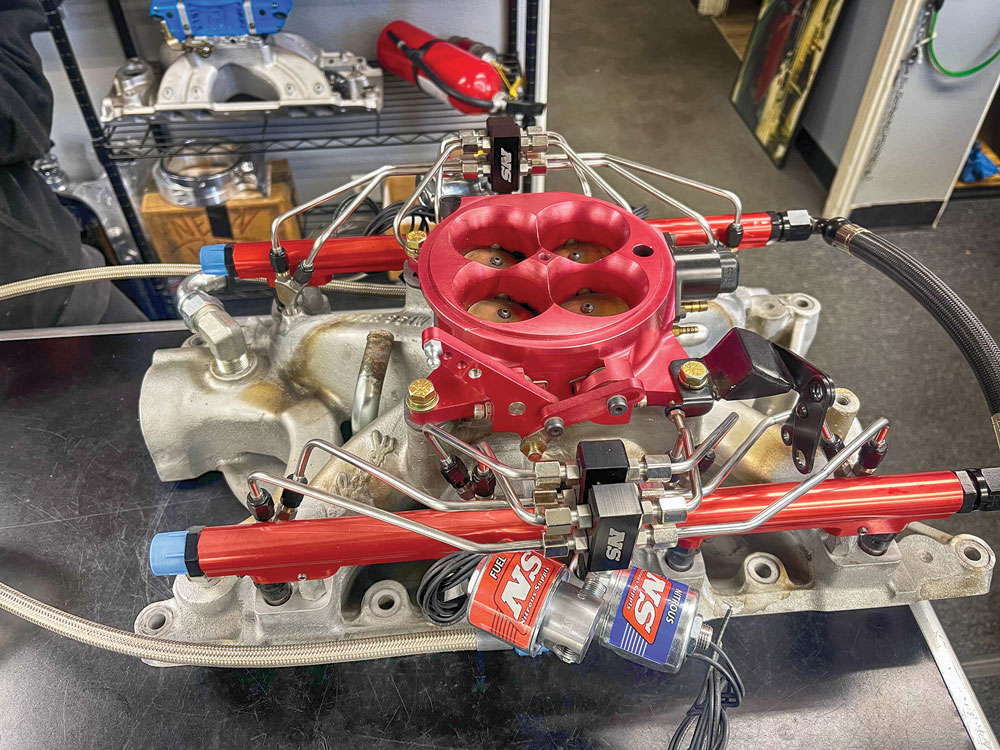
6. Wet or Dry?
Generally, wet systems are best for racers looking to add nitrous to a carbureted vehicle, or one with a stock ECM. Most other engines are best served with a dry system. That said, it’s typically worth the effort to add an aftermarket ECM to run a dry system on modern EFI-equipped engines, for the additional control that allows. At the same time, it also adds a valuable safeguard to avoid fuel-distribution issues.
“In fuel-injected cars, the intake runners aren’t designed to flow fuel,” said Wrenn. “They’re designed to flow air. So when you try to put a heavy object into that intake, it falls out of suspension. Then you started having backfires and fires period because these intakes aren’t designed to flow liquid.”
7. Pick the Right Cam
Although many first-time nitrous users start with whatever camshaft they were already running on their engine, it can be beneficial to change it. “Cam timing becomes an important issue with nitrous,” said Thermos. “You need to open the exhaust valve a little sooner, because you’re done with the exhaust earlier. Plus, the weight of the air coming through the intake tract is a little heavier now, so you might be able to do what we call inertia feed the motor—in other words, hold the valve open a little longer to fill the cylinder better. Overlap also plays a role with nitrous. Shorter overlap tends to work better.”
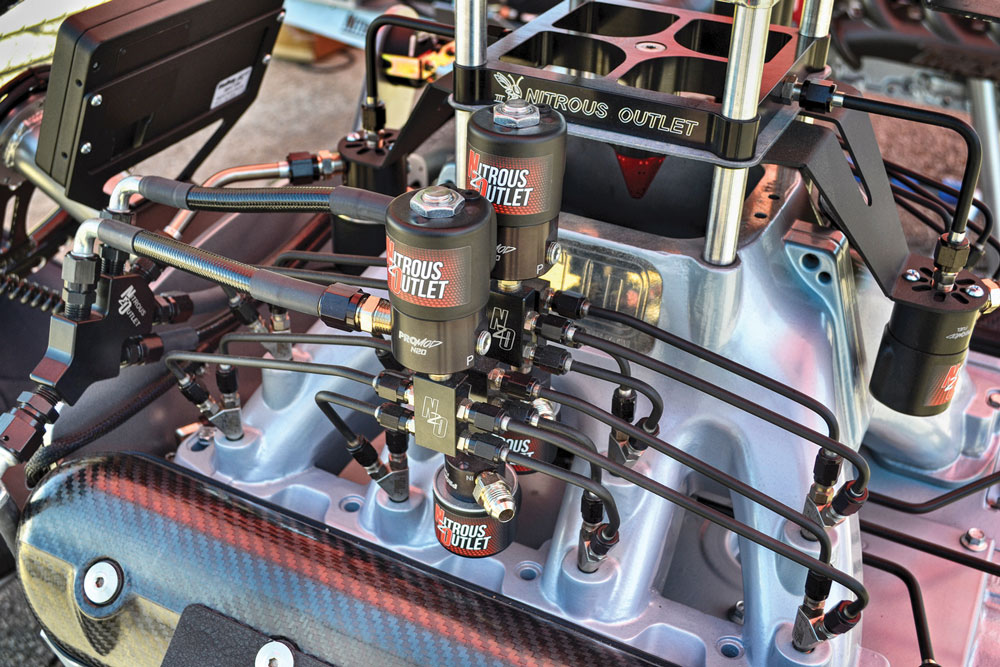
8. Soften the Hit
Nitrous controllers allow the user to precisely manage the parameters of how nitrous is injected into the engine, and when each stage will trigger on multi-stage systems. This not only helps preserve the engine, but it can also get the car down the track faster by allowing it to hook up better and stay under control.
One method of softening the hit of a V8 or V6 direct-port system is to introduce nitrous on one bank of cylinders when launching and then bring in the other side soon after. “On, say, a 400-hp engine, if you try to turn on 400 hp at one time, it’ll probably spin the tires,” said Wrenn. “So you have two options—go progressive or bank it. With banking it, you take the left-hand side, leave with that, and then turn on the right-hand side. It works out because the cylinders in the two banks are actually firing across from each other.”
Additionally, the length of the line connected to the solenoid can also make a big difference in how hard nitrous kicks in. This can be valuable in tailoring the response of the system for the car and track conditions. “Our kits come with about 12 inches of braided-steel line,” said Wrenn. “If you get to the track and the starting line is absolutely horrible, you can add a 6-inch or 12-inch piece, so it’s 18 or 24 inches. You’ll still get the same horsepower, but the impulse to the engine is smoother and slower. Then you can do that same little trick down range. So, let’s say if you have a two-stage plate, in the transition, when you’re changing gears, if the car wants to move around, okay, make the line 18 inches instead of 12 inches.”
9. Get the Ignition Timing Right
The biggest killer of nitrous engines is improper ignition timing, according to our experts. Although the specific amount that timing should be retarded varies somewhat from one engine to another, it’s recommended to start with an established baseline.
“A lot of guys have this theory that you can run lots of timing advance and compensate with fuel,” said Musi. “But it doesn’t work like that. You’re increasing the burn rate with an oxidizer, which is nitrous. So you have to fire the charge later. A good rule of thumb for retarding timing is three degrees for every 100 hp you add. So let’s just say the motor runs well at 36 degrees of advance and you’re going to put a 250-hp nitrous system on it. You would take seven-and-a-half degrees of advance out of it. And that’s a pretty known number for all engines.”
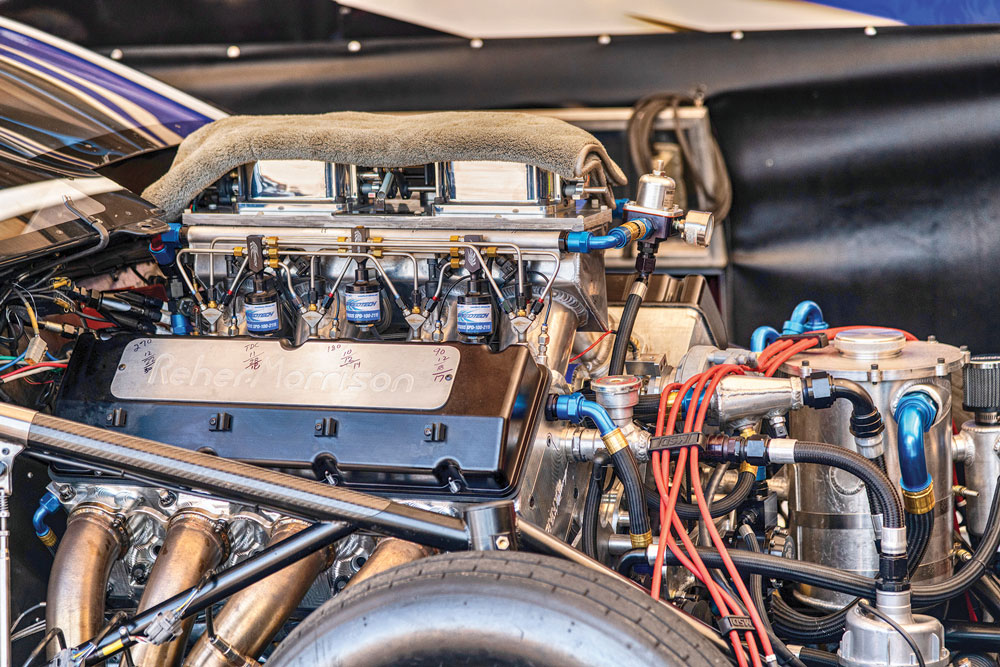
Additionally, the shape of the piston can significantly influence ignition timing in nitrous engines. This should be factored in when deciding how much to retard the ignition. “Nitrous doesn’t like a piston with a dome,” noted Thermos. “It wants a clean burn across the cylinder. So if you need to get your compression up, do it by raising the height of the piston. Don’t put a big knuckle on the top of the piston, because it has to go around that, and it doesn’t have clean combustion. Guys who have domed pistons are the ones who call me and say they have 40 degrees of advance in their motor. That’s telling me that the combustion is really inefficient if you have to lead the motor by that much.”
10. Get Carb Jetting Right
Adding nitrous oxide to an engine radically alters its balance of fuel and air. So carburetor jetting is vital for its long-term health and longevity. Many racers fear going too lean with the fuel mixture when running nitrous. But more nitrous engines are killed by an overly rich mixture than a lean mixture, said experts.
“When we turn nitrous on, we’re bringing 950 positive psi of air at minus 128 degrees in the cylinder,” explained Wrenn. “Now you’ve created a pressure differential below the carburetor. When you do that, the vacuum through the carburetor is going to more than double. Your .090 jet is going to act like it’s a .110. So now you’ve created a problem instead of solving one. The motor is showing that it’s rich, and some people start tuning their nitrous system to make up for it. Using nitrous to tune the motor like that is a death sentence.”
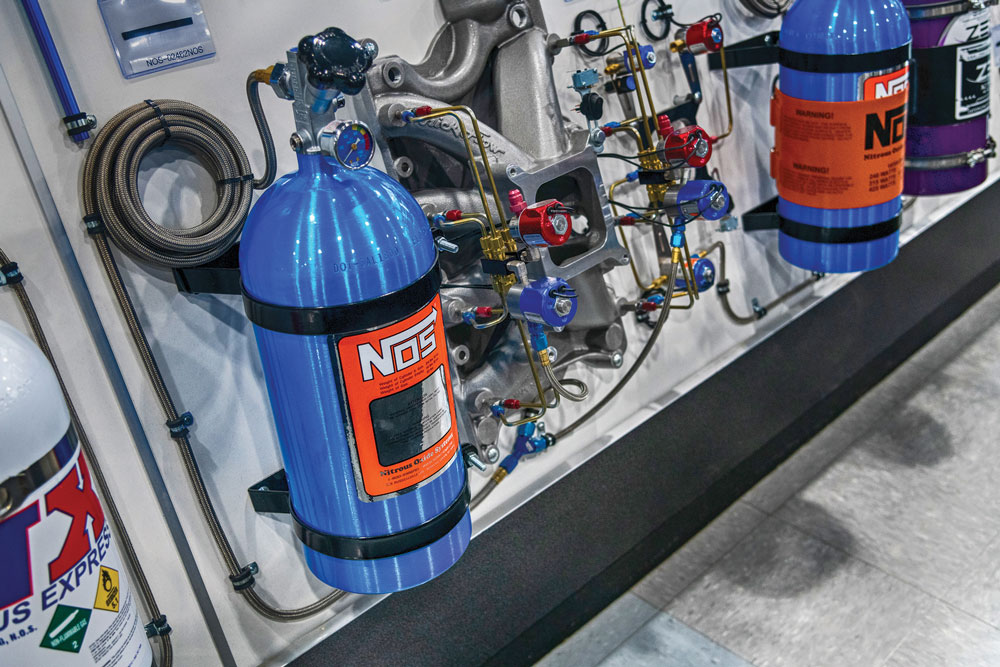
11. Sneak Up on It
Experts recommend working slowly up to maximum power levels with nitrous. “A big mistake we see is trying to go too big too quick,” explained Wilson. “They don’t ease into it. They don’t see what they’re getting into, and they jump straight to the biggest jet. That’s really not the best way to handle it. You want to start out with the smallest and work your way up.”
12. Recognize Signs of Trouble
Even when gradually building to higher power levels with a nitrous system, it’s still vital to learn the signs of when things are about to go wrong. “A very important tool when you’re using nitrous is to monitor your crankcase pressure, meaning your vacuum,” said Musi. “If you have a vacuum pump on a motor, let’s just say you have 12 inches of vacuum—I’m just picking a number. If everything’s happy, that thing should be 12 inches at the finish line or climbing with rpm. The minute you see that vacuum go down, that means you’ve blown by the rings, and that’s when you get into the danger zone.
“The other factor that is really important is reading spark plugs,” continued Musi. “You have got to know how to look at the spark plug strap and check your timing. If you ever see a little bit of wear on the end of the electrode, you are definitely in the danger zone.”
Nitrous is easy, simple, inexpensive horsepower, and it’s relatively foolproof if it’s done with proven methods. Sure, there’s a lot of science involved in how nitrous oxide works. But adding it to an existing engine isn’t difficult. The magic is well within the reach of average racers. “It should never take a year or two years of people never getting their nitrous combination together,” said Wrenn. “It’s simple.”
Nitrous Safety
When people speak of nitrous oxide’s potential dangers, they’re usually talking about how this potent gas can hurt engines. But the plain fact of the matter is that nitrous can also be plenty dangerous to human beings, too. “What you’re doing is bolting on a bomb and seeing how far you can go before it goes off,” said Ernie Wrenn of Compucar Nitrous Systems, North Augusta, South Carolina. “If you don’t understand the basics, that’s what gives nitrous a bad reputation.”
Although nitrous has been around for decades and there are well-established protocols for using it, injury and death from misuse still occur too often. It has even reached the point where outside agencies have threatened to monitor and control the use of it in automotive applications.
“The dangers need some discussion,” said Mike Thermos of Nitrous Supply, Huntington Beach, California. “I’ve been called on the carpet by the cryogenic companies about what racers do with nitrous. Along with the California Highway Patrol, they said, ‘If you don’t police your industry, then we’re going to police it. And you probably won’t like it—every hose and every fitting will have to be sent to a lab and get tested.’ It would go from being a $500 kit to being $5,000, which would take it right off the market.”
To some degree, the dangers of nitrous are inherent in the technology. Nitrous is stored in tanks under high pressure. If someone accidentally drops the bottle and the valve gets knocked off, the tank instantly turns into a wild, unguided rocket traveling with enough force to injure or kill anyone who happens to be in its way.
But just as bad is the improper heating of bottles, which is commonly done with a propane torch. “I cringe when I see a lot of the stuff the racing industry thinks is normal,” said Thermos. “Propane torches boil the nitrous a little bit, and the pressure comes up. But it also anneals the aluminum that the tank is made of. You’re actually changing the integrity of the metal. It might not let go until 50 times later. But eventually, it will.
“A lot of guys think, ‘Well, nitrous is non-flammable, so I’m okay,’” continued Thermos. “But when it reaches the temperature of 570 degrees, the atoms of the nitrous molecule let go of each other. That’s called disassociation. When the molecule breaks up, it expands to 419 times its original size. At that point, the safety valve opens and relieves the pressure. But the safety is only a little quarter-inch hole, and the nitrous expands so quickly that it can’t get out of that tiny hole. So it just blows the side of the bottle out.”
Fortunately, most sanctioning bodies have very specific rules on how nitrous bottles should be heated. Such rules typically require heating blankets designed for the purpose. However, those also should be watched carefully when being used.
“Even a blanket warmer has to be controlled,” said Thermos. “Otherwise it can warm the bottle until the safety blows. It’s happened in my shop. I’ll put a heater on a bottle, knowing I’m going to take it off in five minutes. Then the phone rings or something and I forget about it. In the back of the shop, I’ll hear the safety pop like a firecracker.” —David Bellm
SOURCES
Compucar Nitrous Systems
facebook.com/compucar.nitrous
Holley Performance Products
holley.com
Musi Racing Engines
musiracing.com
Nitrous Supply
nitrous-supply.com
 MEMBERSHIP LOGIN
MEMBERSHIP LOGIN JOIN PRI
JOIN PRI


